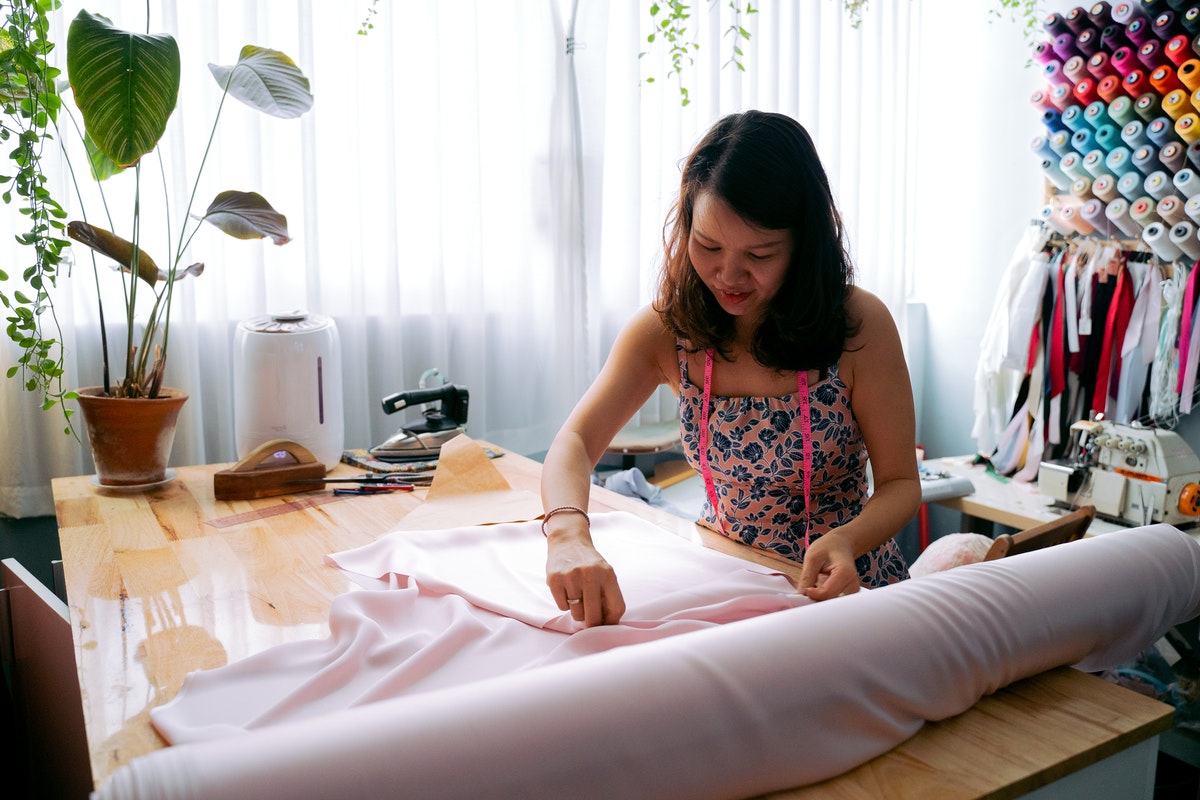Anyone who works with textiles, whether for fun or a living, knows how expensive the supplies can be. If you’re starting, it’s always better to experiment with cheaper fabrics and materials before moving on to premium items. But even seasoned practitioners find it difficult to sustain their love of textile art. Accessibility is often an issue, especially if you don’t live in a big city. And even if you have access to high-quality supplies, you still have to contend with the high prices.
Fortunately for you, you’re not the first person to look for cheaper alternatives. Textile art can be terribly expensive. Knitting or crochet might look relaxing, but they also require a lot of time and resources. Artists aren’t exactly known for their financial management skills, but stereotypes are meant to be broken. Use this opportunity to show that you can create good textile art without breaking the bank.
If you know where to look, you can find good deals on tools, fabric, applique quilt kits, and other materials. Being budget-minded allows us to become better and more responsible practitioners of the craft. Here are a few budgeting tips to get you started.
1. Look for a neighborhood shop
Chain stores often have bigger selections, but they rarely have a sense of community, nor do they reward loyalty. You’re better off going to your neighborhood supply store. For starters, you get to support local businesses. And you can be sure that the person running the store knows what they’re talking about.
Some neighborhood stores also offer incentives or discounts to repeat customers. Ask the store if they offer a loyalty or discount program. If they don’t have one, you can negotiate a supply agreement with them. You can have them as your official supplier in exchange for benefits. If all else fails, you can always go online for your supply needs. Many textile stores offer deep discounts to online shoppers.
2. Ration your materials
Fabrics and tools can be expensive, and if you’re not careful with your supply, you could end up spending hundreds or even thousands of dollars. One way to minimize your art expenses is to ration your materials. You need to be extra careful with the way you apportion your supply. The more precise you are, the less material is wasted.
If you’re new to textile art, you’d have no point of reference that will inform you how much is too much. Just keep on doing what you do and make it a point to record how much material you use for each project. Once you have enough data to make an informed opinion, you can start making improvements to your process. Eventually, you’ll be able to minimize wasted material.
3. Take advantage of promotions

You’re practically throwing money away if you don’t take advantage of deals, coupons, and sales. All chain stores offer seasonal promotions that will save you a lot of money. You can also ask your favorite neighborhood store if they have any upcoming promotions. Everyone benefits: you get to save money, and the store can attract more customers.
Chain stores typically advertise their promotions ahead of time. You also might want to sign up for their loyalty program in case they offer member-only promotions. Smaller stores might partner with local newspapers to publish paper coupons for their readers. Finally, it wouldn’t hurt to scour the internet for discount codes and secret deals. Make sure to compare prices so that you know you’re getting the most bang for your buck.
4. Look for used fabric
Let’s be honest: brand-new fabric is expensive, especially if the design is new to the market. If you work a lot with fancy fabrics, a huge portion of your budget goes to the materials alone. You can always try other types of textile art, but if your business revolves around fabric, you need to find a way to cut costs. Your other option would be to raise your prices, and I’m positive you won’t like that. What else can you do?
One great way to save money without compromising your art would be to look for used or repurposed fabric. If you know where to look, you can get amazing fabric at a bargain price. You might even find a discontinued pattern or texture. Many textile artists have found novel and creative uses for old fabric.
The bottom line
These four tips will help you save money without sacrificing your textile art. Budgeting is easier than you think. You need to divert your creative energies towards minimizing waste and expenses. Start by supporting local shops to encourage community participation. You also need to start taking advantage of deals and wasting less material. Finally, consider using repurposed fabric.

